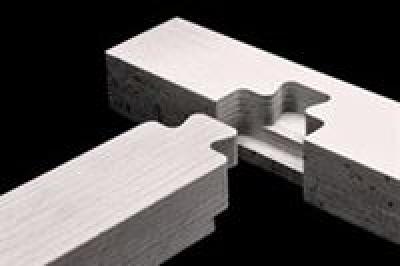Dec 15, 2017 _ Why Hermpac chose Flow Software for EDI… When its trading partners requested electronically-submitted invoices, building supplies manufacturer Herman Pacific looked to Flow Software to provide the necessary integration. In a low-touch solution, the company now seamlessly interfaces with the various enterprise resource planning systems used by its major vendors, with the efficiency and performance advantages it enjoys also extending to its partners.
Herman Pacific – or Hermpac – is New Zealand’s leading manufacturer and supplier of specialty timber products. Established in in 1974 with a simple promise, ‘quality first and second to none’, the privately and 100 percent locally owned company operates out of a 9-acre facility in Silverdale, north of Auckland, with further sales and warehousing facilities in both Wellington and Christchurch. In addition to its flagship Western Red Cedar timber, Hermpac offers over 15 different hardwood and softwood options, matched with a range of solutions from the ground up: flooring, decking, weatherboard, cladding, mouldings and paneling.
| SituationWith the march of time, the old methods of handling business administration are replaced with the new. Greg Crawford, Hermpac’s group accountant, explains that the major merchants with which the company works, updated their policies to require all invoices to be submitted electronically. “Previously, we were sending invoices by printing and posting them. This is a business process which we are increasingly seeing digitised for very good reasons, as it reduces errors, lowers costs and results in a much faster delivery of the paperwork,” he notes.
The merchants to which he refers are the large retailers and trade suppliers of building supplies across New Zealand such as Placemakers, ITM, Carters, Mitre10 and Bunnings. “Using the postal system is increasingly inefficient and the time taken for processing on our side and that of the customer isn’t good enough. All our major merchants want a similar sort of thing, with invoices going directly into Accounts Payable and lining up with order processing. It means they don’t need people keying in information and it reduces the chances of mistakes.”
| SolutionWhile a point-to-point integration doesn’t present any major challenges, the picture does get more complex when considering the multiple ERP systems in use by various customers, says Crawford. “Each of our major merchants uses a different system and we need to integrate with all of them,” he points out.
However, he says with Flow Software’s experience, addressing each integration has proven a surprisingly simple, low-touch task.
He explains a typical integration: “We get a Message Information Guide (MIG) pack from the merchant which details their requirements – and Flow generally already has that anyway. We pass over the contact details of the merchant as well as the people who support our Dynamics SL ERP [Adaptable Consulting].”
Flow’s technical people installed their middleware software at Hermpac, and within Dynamics SL, Adaptable created several views which were accessed by Flow’s technicians. “Those views come from our SQL database and are dumped into the Flow server, which checks every 10 minutes or so for invoices which are then sent to our customer by EDI.”
Getting it done, Crawford again notes, took very little effort aside from coordination between Flow and Adaptable Consulting. “And there was already a working relationship there – so engaging with a trusted partner with a proven track record really made this easy, with basically the same process for every one of our customers which wanted invoice integration.”
He has praise for the flexibility of Flow’s integration and the lateral thinking of its people; one customer required a feed of electronic purchase orders into Hermpac’s systems before invoices could be sent the other way. But there was a problem, as Crawford explains: “We didn’t want the PO going directly into our systems, as when we are supplying specialty timber solutions, it has to be carefully checked to be sure the right product is selected. If it is wrong, it must be corrected, cancelled and resent, creating an administrative overhead.”
Flow created a workaround, which saw the incoming POs captured and held, allowing for evaluation, before continuing the process. To the merchant, the process is seamless, while for Hermpac, there is no need to worry about incorrectly specified orders going into its systems.
| ResultsIntegrating with its trading partners, say Crawford, has gone off without a hitch. “For each EDI implementation, Flow asks for sample orders, sets them up as tests in the system and works with the recipients. When all parties are happy with the testing, we get an OK, go live and we haven’t had an issue.”
With the first such go live in February 2016, and a further three merchants since the original integration and a fifth being added at present, he says Hermpac has had ample opportunity to test the reliability and durability of the Flow integrations.
Electronic integration, Crawford says, dramatically accelerates invoice processing while eliminating the costs of printing, paper and postage. “Customers get their invoices a lot quicker. We save time and money. And it is more reliable.”
Which isn’t to say all Hermpac’s customers are receiving EDI invoices. Some prefer an emailed PDF document, while others still prefer snail mail. He says the company’s systems are set up to provide options for the preferred mechanism of information exchange depending on individual requirements.
Asked if he would go through the process of invoice EDI again, Crawford has no hesitation. “If it was with Flow I would. They have the expertise, they understand this well and they made it work without any headaches or issues. And their lateral thinking is of great value.”
| Source: Flow Software || December 15, 2017 |||





